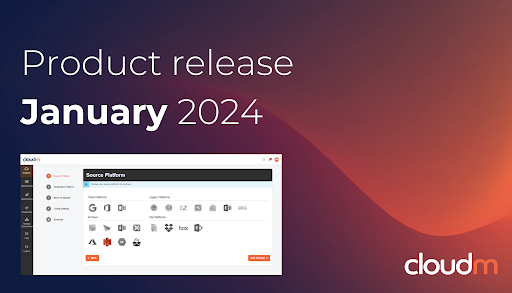CloudM’s first release of 2024
The first release of the year sees small but mighty improvements to our entire product suite. The focus is on improving our users’ experience when restoring items in both CloudM Archive and Backup, and we’ve also added some significant functionality to Migrate. Read on to find out what’s new.
CloudM Backup 1.4: Item restoration and better stats
CloudM Archive 2.1: Faster restorations and UI tweaks
CloudM Migrate 3.43: AWS support, new file type for mail archive migrations and increased migration speed
Looking for CloudM Automate 2.9.X?
CloudM Backup 1.4: Item restoration and better stats
Do you often need to restore just a few files instead of an entire user or drive? Restoring single Google Drive and Mail items from our Backup module can now be done in just a few quick clicks thanks to the new item restoration feature. Within the same workflow you can also restore previous versions of a file. To further improve Backup and its feature set we’re working on folder restoration – keep an eye out for the announcement in upcoming release comms!
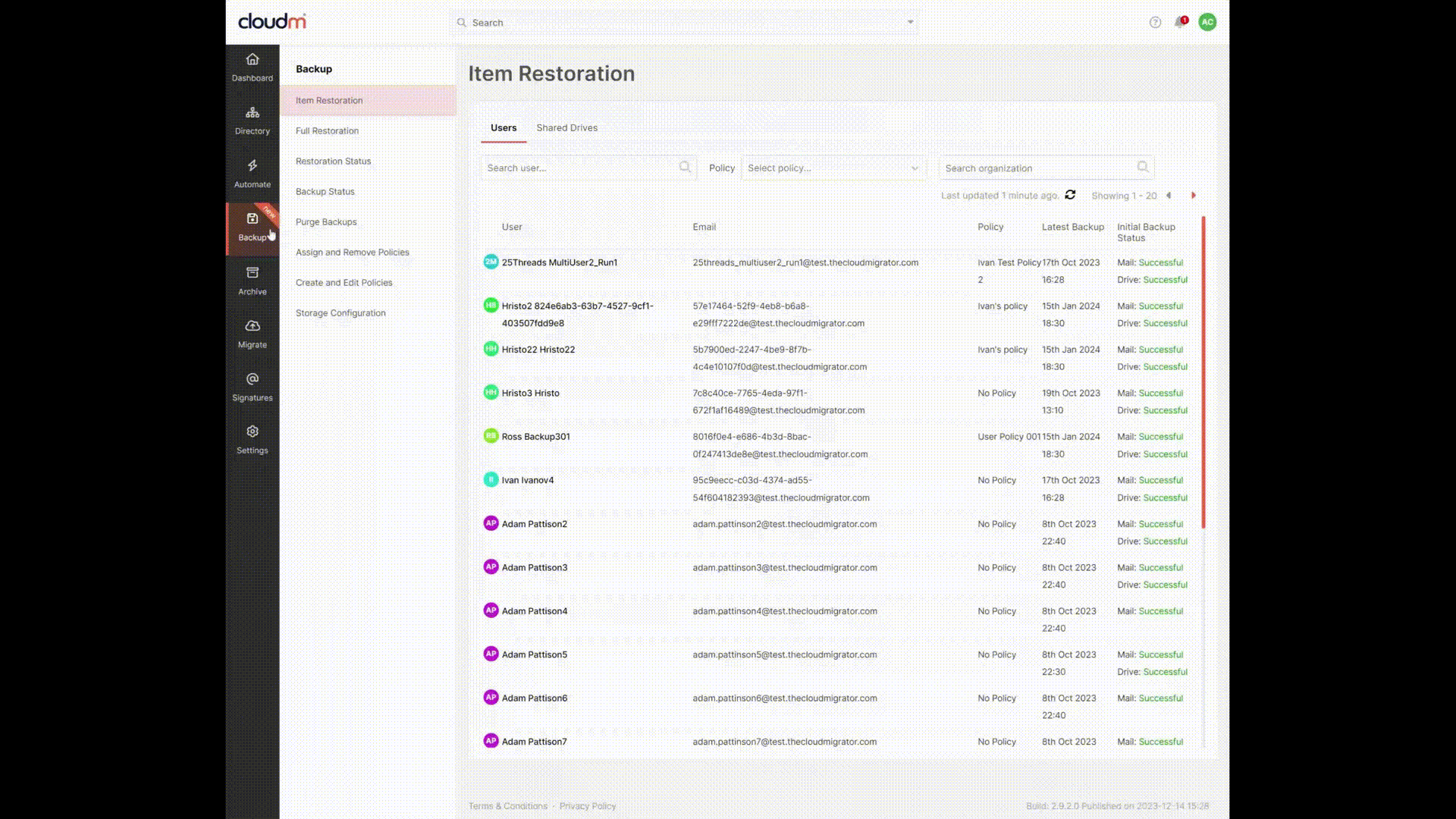
As a small but useful improvement to give you better insights, the Backup statistics dashboard now displays the total number of users and shared drives alongside the number of users/shared drives which have a backup policy assigned. This gives you a direct view of how much of your organization’s data is protected by an active backup policy.
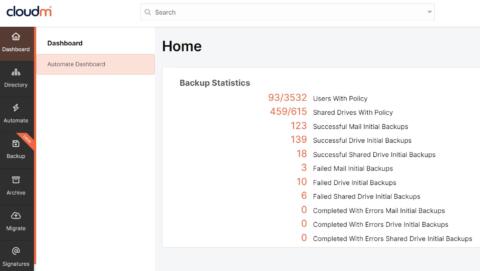
CloudM Archive 2.1: Faster restorations and UI tweaks
To speed up restoration of a whole user, Archive customers are now able to restore a user’s Mail, Drive and Chat items at once instead of going through three separate steps.
We have also tweaked the UI so it’s easier to navigate and more in line with our other modules:
- The Restoration section is now split into two to better separate partial and full restoration.
- There are now separate sections for restoration status and archive status. The status filter has been simplified.
- The Configure section is now called Storage Configuration. If configured, a bucket friendly name is set to show as the name of the relevant tab.
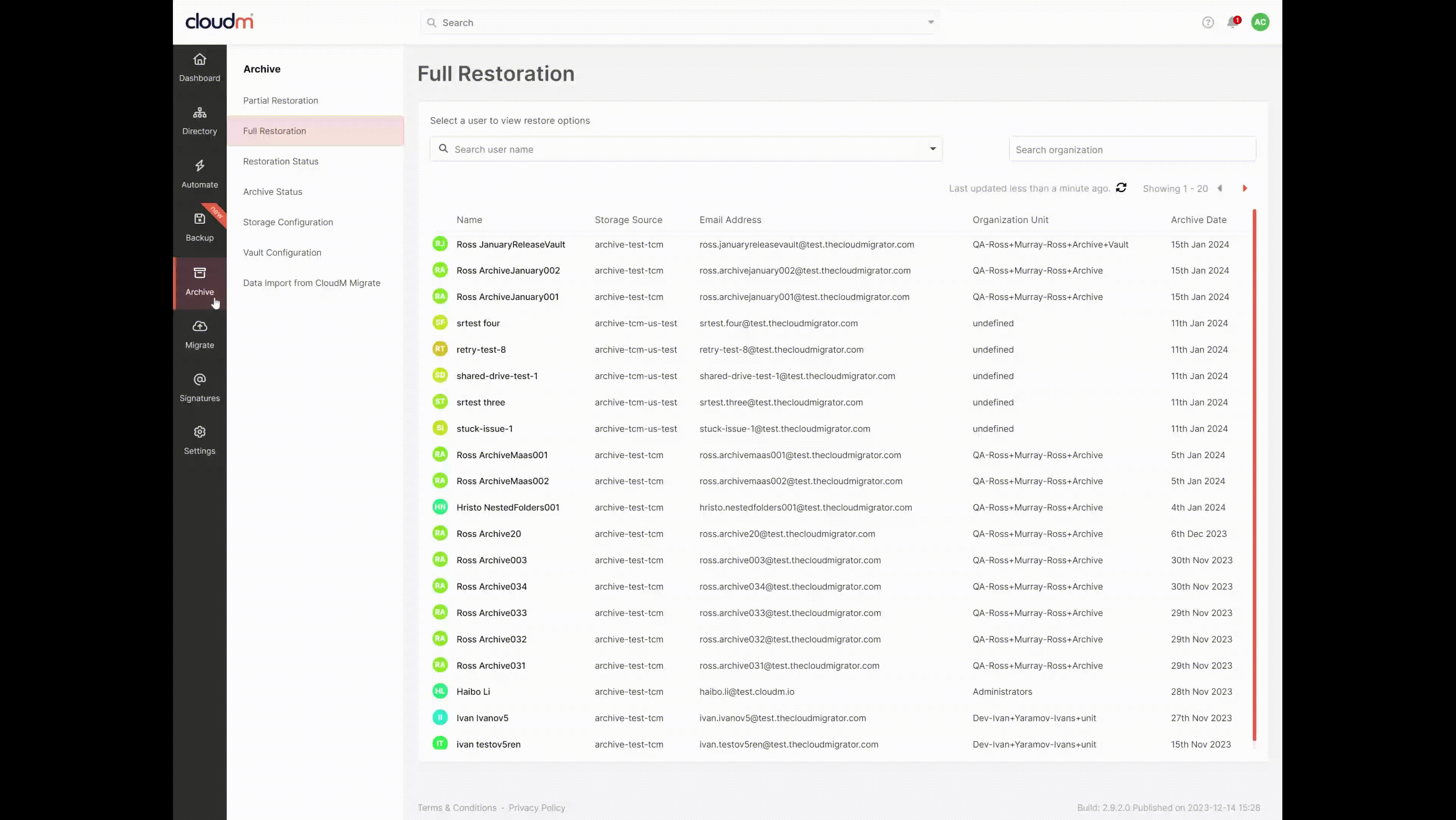
CloudM Migrate 3.43: AWS support, new file type for mail archive migrations and increased migration speed
Following the introduction of AWS as a storage option for Backup in our last release, Amazon S3 Cloud Storage is now a supported source and destination for Migrate. This means that you can move data to the cloud storage of your choice, be it Google Cloud, Azure or AWS. Those interested in or already using Backup are able to move data into AWS using Migrate and then use it in Backup without any external tooling.
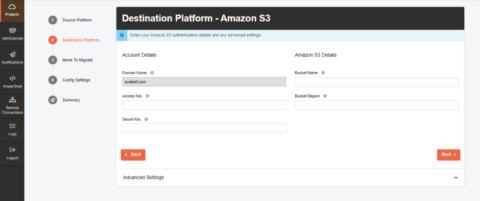
*Updated* Better, easier offboarding with CloudM Automate 2.11.0
Our latest Automate release is focussed on strengthening the module’s offboarding features with customisable offboarding notification emails, scheduled offboarding and better offboarding of people managers.
Automate enables you to send internal offboarding notification emails when a member of the team leaves and often include required action for the recipient, such as raising a support ticket should an offboarding step fail. With the Automate 2.11.0 release you can now not only customize the subject line but also the body copy of these emails to tailor the content to your needs, e.g. to give clearer instructions on required steps.
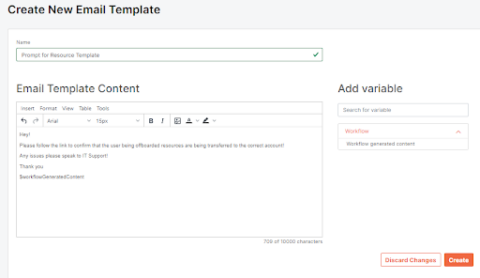
Another neat improvement to Automate is more precise scheduled offboarding: simply choose a time and day and the offboarding process will commence within the hour – previously it was only possible to choose a 24-hour period during which the offboarding would happen. This release ensures that system access is removed in a timely, automated fashion.
In addition to better scheduling of onboarding, we’re also making the process of offboarding managers slicker thanks to three new features:
- New offboarding workflow step: bulk removal from and replacement of a leaver in the “Manager” field of any team members they manage.
- Domain insights on the dashboard that show users who have a manager assigned who has been deleted or suspended.
- If offboarding of a user fails because their manager has been deleted, suspended or delegated and certain offboarding steps such as transfer documents can therefore not be completed, you can now change the manager before retrying the step.
Read the full release notes here.

